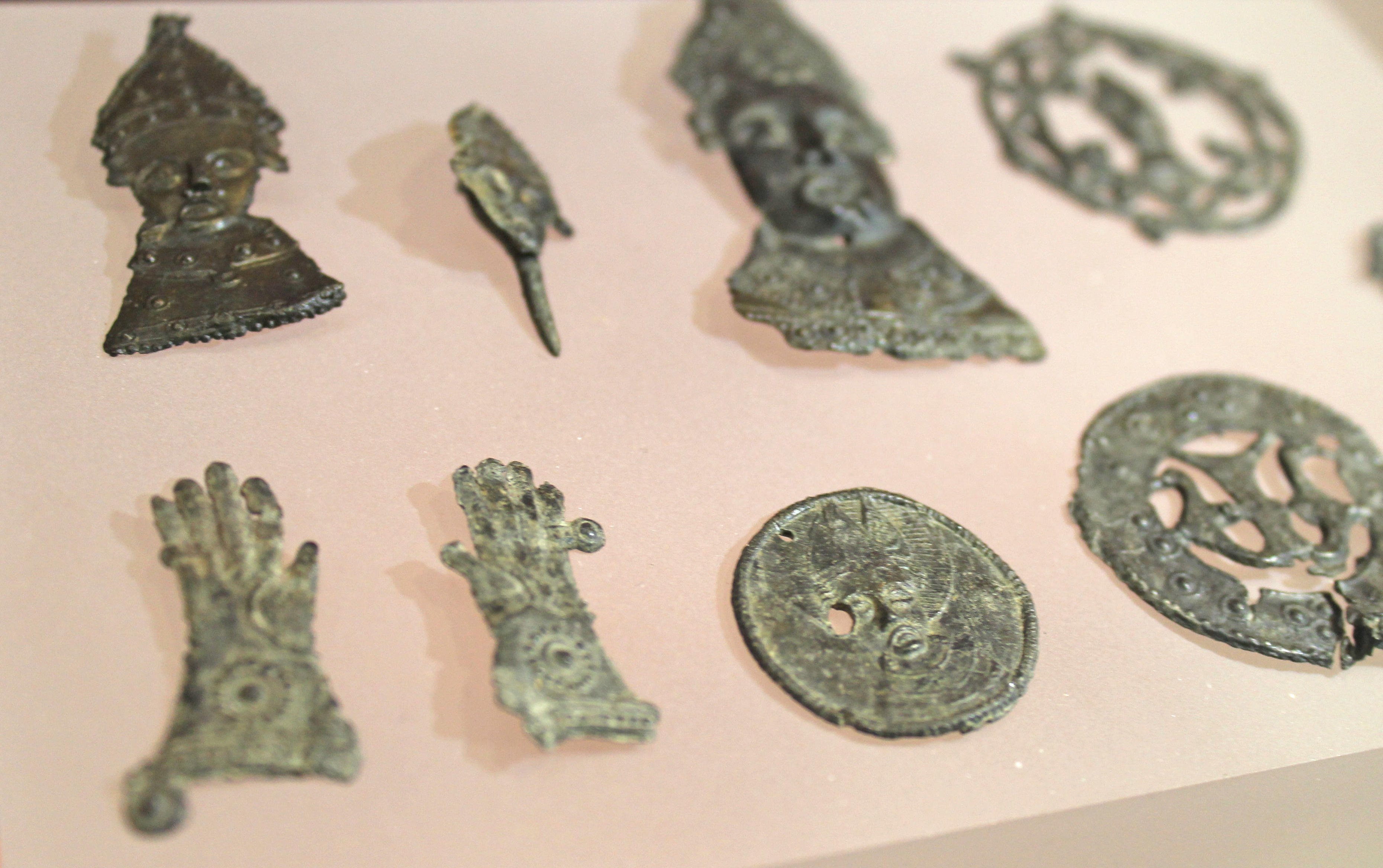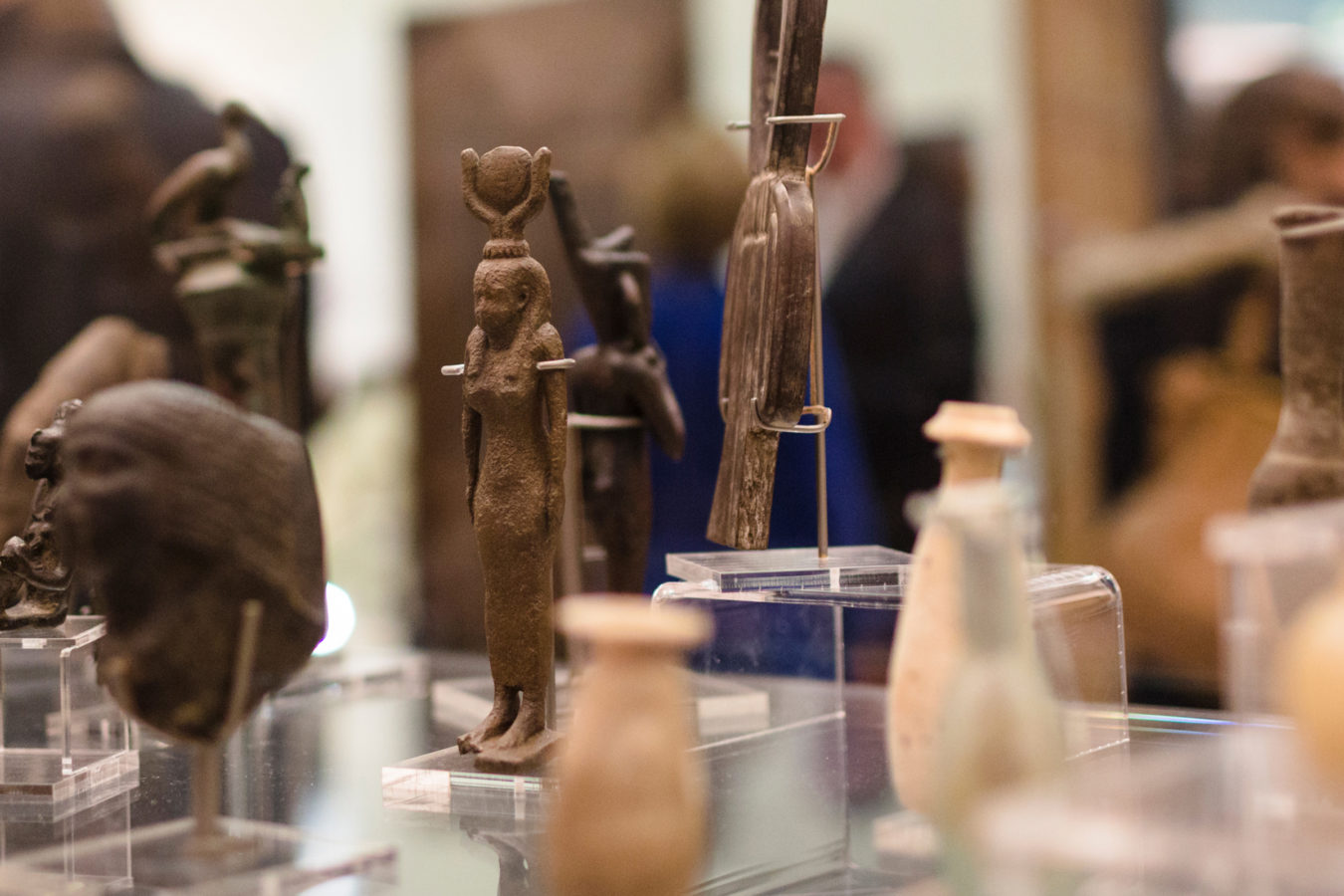
Millie Knight by Dene Leigh
An Oil on linen portrait of Millie Knight by artist Dene Leigh on display at The Beaney in...
When the pilgrims arrived they were shown the exact spot where Becket was murdered, the location of the first tomb, and a golden head of the saint – which held the top of his skull. The visit concluded when a wooden canopy was raised to reveal the saint’s gold and jewel-encrusted tomb.
As a result of all the pilgrims the city prospered. Inns sprang up to cater for them and the trade in Pilgrim’s Badges flourished.
Within every pilgrim was an element of worldly tourist and pilgrim badges were essentially religious souvenirs. They were worn on either your hat or cloak and collected as mementoes of the shrines you had visited. They were so popular that tens of thousands were collected every year – after a long arduous journey to reach their destination it’s only natural people wanted something to commemorate, and prove, they had actually visited Becket’s tomb!
Badges depicting the head casket of St Thomas Becket were amongst the most popular badges to collect, with one of the finest collections of them now on display in the museum.

Did you know? The practice of pilgrimage, worship of relics and the belief in miracles greatly appealed to medieval people as they thought it was one of the principle roads to salvation.
